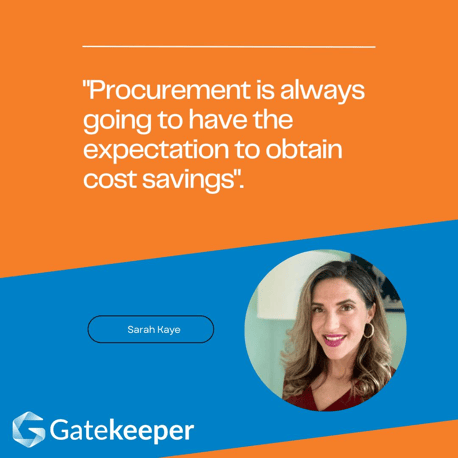In a recent interview, Sarah Kaye, Head of Procurement- Americas at Spin, shared her insights on the difference between cost control and cost reduction and why focusing on cost control is essential first. She also provided valuable advice for procurement professionals to get involved in the budget planning stage and be more than just a PO pusher.
Takeaway 1: Cost Control And Cost Reduction Are Different
According to Sarah, cost control is a proactive approach to optimising costs and preventing them from being spent later, while cost reduction is a reactive approach to reducing the costs that are already planned.
Both have key benefits, but they are fundamentally different.
Sarah advises that cost control should be the start of the journey, and cost reduction is the ongoing little-by-little maintenance. This takeaway is crucial because it highlights the importance of planning and being proactive to optimise costs in the long run.

Takeaway 2: Procurement Needs to be Involved in the Budget Planning Stage
Sarah emphasises that procurement professionals must be involved in the budget planning stage to get to the root of the organisation's cost drivers.
Procurement can provide value by understanding the heavy hitter costs and bringing in providers that can support the organisation.
Sarah recommends having a reliable system that consolidates and gleans the committed and actual spending from various resources to understand the big picture of how the business is doing.
Procurement professionals need to advocate for themselves and their creativity to demonstrate their value and get a seat at the table. This takeaway is significant because it highlights the importance of procurement professionals being involved in the budget planning stage to generate cost avoidance in the multimillion-dollar range.
Takeaway 3: Cost Reduction is Valuable
Sarah passionately disagrees with the company-held belief that cost control can eliminate the need for cost reduction later.
She believes cost reduction is valuable and requires creativity, persuasion, risk assessment, trust, and follow-through.
There seems to be a stigma around cost reduction in general, just that it's not an area that procurement should focus on to demonstrate their value. But you may be seeing a lot of LinkedIn posts, a lot of people saying procurement is more than cost reduction, we need to demonstrate our value. And I agree we can generate revenue for the business and we absolutely need to showcase that. But I don't think that we need to push cost reduction as if it's not valuable. Because when done right, it requires creativity, persuasion, risk assessment, trust, and follow through. So personally, I get super energized every time that I get to send a summary out with an executed contract done by myself or my team with the savings that were delivered.”
Sarah advises taking the challenge of reducing costs as an opportunity to under-promise and over-deliver. This takeaway is crucial because it highlights the importance of not dismissing cost reduction and the opportunity it presents to generate revenue for the business.
In Summary
Sarah Kaye's insights on aligning cost control and cost-cutting to drive value provide valuable takeaways for procurement professionals.
Cost control and cost reduction are different, and procurement needs to be involved in the budget planning stage to optimise costs in the long run.
Cost reduction is valuable and requires creativity, persuasion, risk assessment, trust, and follow-through. Procurement professionals should advocate for themselves and their creativity to demonstrate their value in both cost control and cost reduction.
By following these takeaways, procurement professionals can drive value and generate cost avoidance in the multimillion-dollar range.

.png)
.png)
.png)
-4.png)